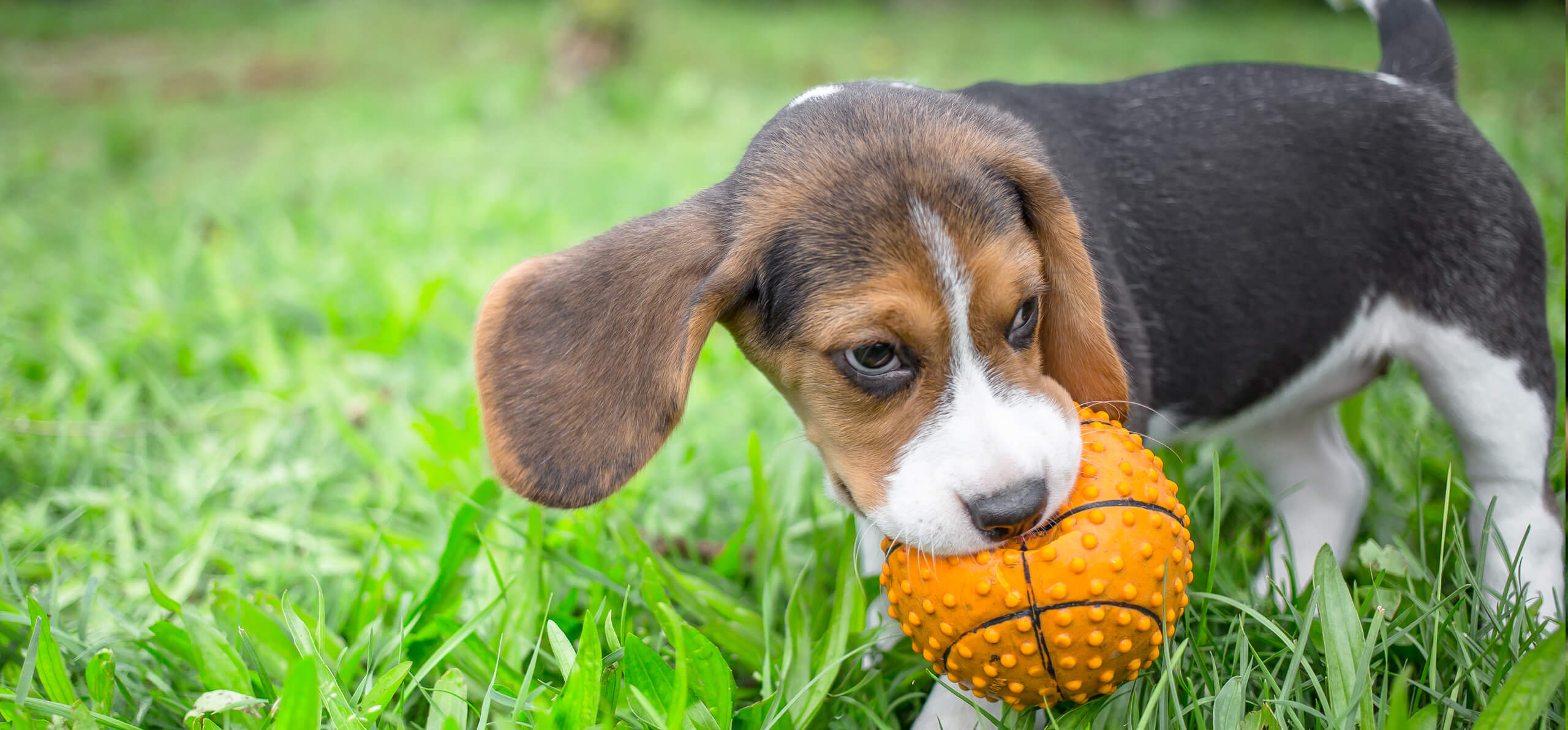It helps keep bones, joints and muscles strong for dogs of all ages. But for puppies, it’s especially important. It helps them socialize and expend all their puppy energy so it's not used on your favourite slippers.
Going for walks every day is a great way to get in some exercise with your best pal, but healthy puppies need something a bit more vigorous and playing fetch is perfect. It’s fast, requires a lot of running and chasing, and can be entertaining enough to tire out the most frenetic puppy.
Like any good sport, training your pup to fetch takes practice. Here are a few ways to start.
All about the toy
Fetching is a fun way for you and your new puppy to bond, and the right toy makes all the difference.
Naturally, fetch toys should be able to fit in your puppy’s mouth. Some veterinarians caution against using old sticks from the yard and recommend safer, chewable toys instead.
The American Kennel Club suggests starting with four to five favourite toys set in a circle. Ideally, the toys should have different shapes, sizes, sounds, and textures. Play with each toy to determine which one your puppy finds the most interesting.
Training techniques
Training a puppy to do anything can be difficult. Fetch is particularly challenging since it mixes rigorous play with behavior learning. It requires a lot of patience on both sides and puppies aren't known for patience. Try these tips to help your puppy learn.
1. Take the lead
Creating demand for the toy is essential to a successful game of fetch. After selecting the perfect toy, use it enthusiastically to lead your puppy around. This helps build anticipation and desire for the toy.
The more fun you appear to be having with the toy, the more he’ll want to play with it. Sure, you may feel silly doing this but when it’s time to toss the toy, chasing after it will be irresistible.
2. Stay put
Puppies are not exactly known for their long attention span. Be patient if your pup darts after the toy once you’ve thrown it but takes a more indirect path back to you.
According to trainer Carla Jackson, it's important you are perceived as the retrieving trainer not the trainee. Even if it takes your puppy several minutes to return the toy to you, stay put and be ready with lots of love and a reward. Banana and yogurt training treats make a healthy treat for reinforcing new behavior.
3. Reward other behaviors
Since fetching is fun, it's a great way to reinforce some other behaviors you’re trying to teach your puppy. While playing fetch, he’ll be in a very energetic state, making things like “sit” and “stay” more challenging.
Teaching your puppy to obey one command before you throw the toy will help him understand that the game is a reward for good behavior as well as a way to bond with you and get lots of good exercise.
Of course, learning new behaviors takes time. Some puppies will love fetching from the word go, others might not enjoy it at first. Be patient and allow your puppy to set the pace.
Keep an eye on the weather and your puppy’s fatigue level. Don’t play for very long when it’s hot outside so you don’t overwork your pup, and be sure he has plenty of water. More frequent, shorter play sessions will help him build up his endurance as well.
Keep ready with lots of love and positive reinforcement, which means filling your pockets with healthy treats like the tasty ones from BlueBuffalo, and your pup will most likely be fetching in no time.

